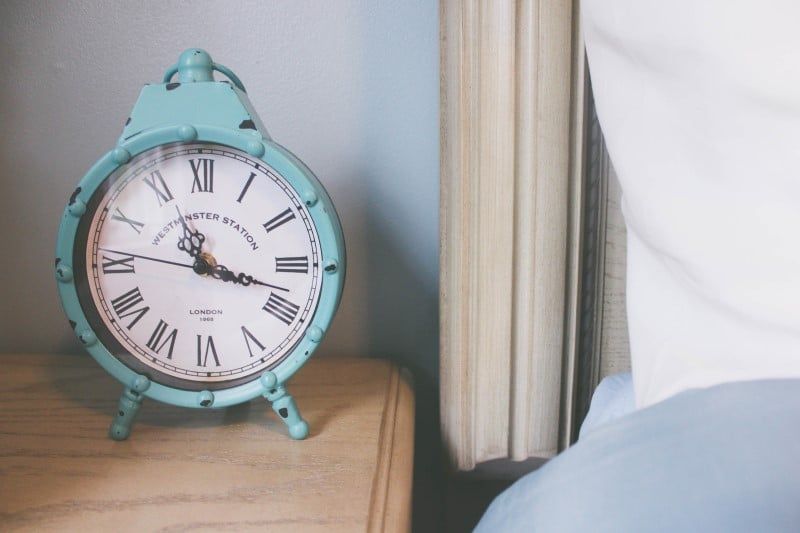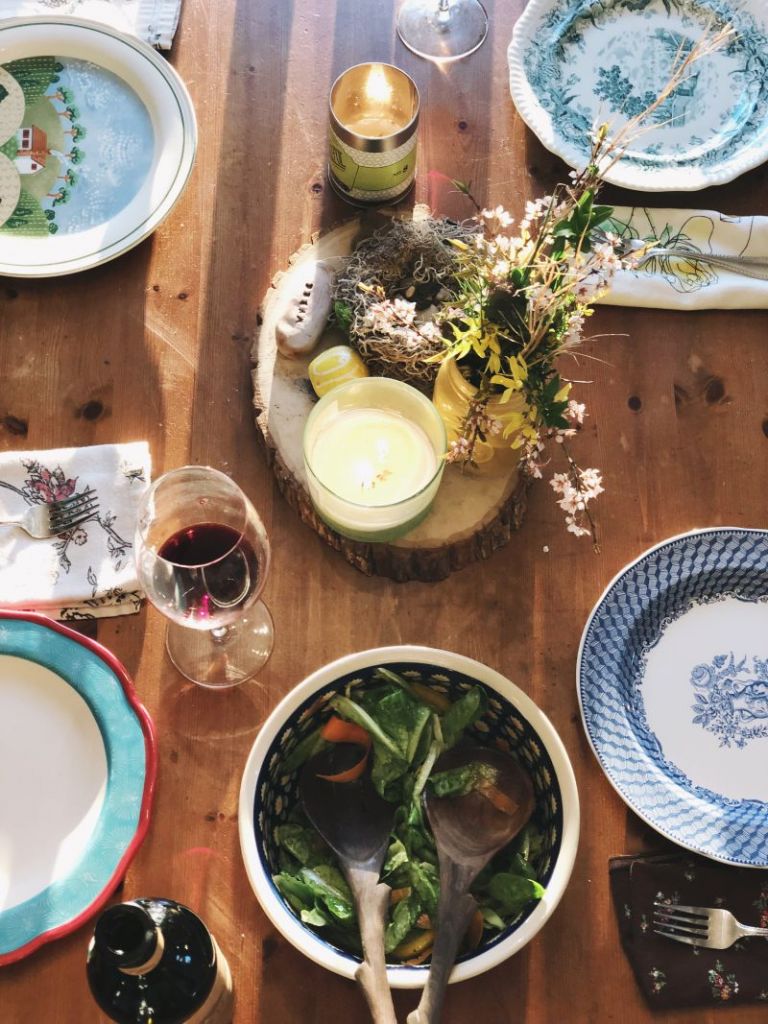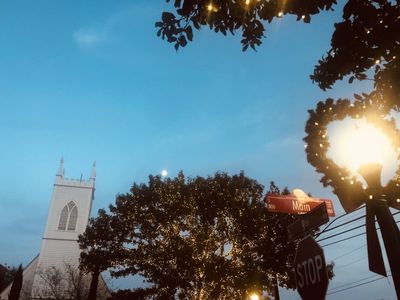A few weekends ago, we decided to have a feast. We didn’t have any guests over. It wasn’t anyone’s birthday. It was just our little family of four on an ordinary Friday evening after a long week of school and work.
My girls helped set the table excitedly, fueled by the aroma of fresh bread in the oven. Meanwhile, my husband whipped up a batch of homemade pesto sauce so fragrant that it permanently infused its scent into the walls of our farmhouse. A huge fresh salad picked from our produce field was placed on the table, and you better believe we popped open the biodynamic Italian wine we had been gifted at Christmas.
As we sat down to eat and I held the hands of my family as we blessed this very-special-for-no-particular-reason meal, I realized something important: feasting is so much more meaningful when you’re not doing it all the time.
Since the beginning of January, I’ve been practicing daily intermittent fasting. I’m not typically one to embark on New Year’s Resolutions, but after a crazy autumn season and the holidays, I’d been feeling an uncomfortable fullness, like I was over-consuming food in general and needed to take a step back. Even though I was overeating, I felt hungry all the time. In fact, I never felt satiated.
I also wanted to feel more comfortable in my clothes. As a farmer, my job is very physical, so I also wanted to let go of carrying any excess weight I didn’t need. Since I don’t weigh myself, I would determine this by how I felt in my own skin, not by what a scale told me. With a history of unhealthy body image and controlling behaviors surrounding food, I knew that to stay emotionally healthy I needed a solid, sustainable plan—not a diet.

After discussing it with our family’s functional medicine doctor, he explained how intermittent fasting could help stabilize my blood sugar fluxuations and even balance hormones. Really?! I was skeptical that going without food would actually help me feel more stable and satiated, but I was willing to try. After reading Dr. Jason Fung’s book, The Complete Guide to Fasting, which our doctor recommended, I decided to try intermittent fasting for the month of January. I haven’t turned back since.
So what is intermittent fasting? It’s simply a way of eating where you switch between periods of eating and fasting. Fasting is not starvation—it’s just the absence of eating for a certain amount of time. It’s an intentional choice to give your body a rest from processing and digesting food so it can heal, recover, and stabilize.
Dr. Fung is a Canadian nephrologist who is considered an expert on intermittent fasting, especially for treating people with type 2 diabetes. His book on fasting and the helpful videos on his website do a great job of explaining why fasting is important for good health, the myths surrounding it, certain types of people who should not fast (like nursing moms) and the wealth of physical benefits—decreasing inflammation, reducing insulin resistance, promoting brain health and better digestion, to name a few.
The list of benefits is long, and it’s backed by plenty of case studies and scientific research. As I studied up on fasting, I was reminded that this is nothing new—people have fasted all throughout history, for physical and spiritual reasons. It’s only in the last 30 years or so that we’ve added so many extra “feeding times” to our schedules.
There are several different kinds of fasting, but I’m specifically practicing 16:8 intermittent fasting, which means I fast for 16 hours each day and only eat during an 8-hour window. This means that after I finish dinner around 6:30 or 7:00 p.m., I don’t eat again until 10:30 or 11:00 the next morning. I do drink a morning bulletproof-style coffee or matcha latte with coconut milk, and the addition of healthy fats doesn’t spike blood sugar during the fasting period.

Within the 8-hour eating window, I usually eat two whole food, nutrient-dense meals and sometimes snack in between (if you’re interested, you can read my Day In the Life post for what I ate on a typical day). I’ve also done a few longer 20-24 hour fasts sprinkled in.
Anyway, I’ll leave all the medical stuff to the experts—intermittent fasting isn’t for everyone, so ask your doctor before you try it. I’m just a girl on a journey toward being my healthiest physical, mental, and emotional self, and I wanted to share 5 good things I’ve learned from intermittent fasting over the last several months:
1. I need much less food than I was eating.
Around the same time I started daily intermittent fasting, our family was watching Marie Kondo’s new Netflix show, Tidying Up. As I decluttered all my drawers and closets, I saw a close parallel between the KonMari method and intermittent fasting—I actually need less than I’m consuming. For me, this applies to both stuff in my home and to food. Intermittent fasting has turned what I have into enough, instead of constantly craving more. Within two days of 16:8 intermittent fasting, I couldn’t finish the food on my plate, and it felt like a small victory to recognize that I was satisfied with less.
2. I’ve recaptured a deep gratefulness for food.
When I visited India in 2005, I sat in a circle of people on the floor in a village home, with one pot of rice and a plate of naan bread in the middle—our only meal that day for 10 people. The bowed heads and prayers of thanks came from a place of complete reverence for provision when food wasn’t always readily available, and we didn’t have every choice under the sun. This was their daily lives; I was just getting a glimpse during a 10-day trip. Intermittent fasting helps me remember my friends in India daily. Now, when I sit down to “break the fast,” I look down on my plate and feel so grateful to have an abundance of colorful, healthy food. I enjoy every nourishing bite and know that it’s a privilege to have even this.
3. I’ve found more freedom in my body image.
In my early twenties, I started eating “low carb” and dropped 50 lbs of college weight rather quickly. But I wasn’t really healthy—I consumed a lot of fake foods and also became quietly, internally controlling over what I would and wouldn’t eat—just three frozen chicken tenders at dinner and a bowl of frozen broccoli. Or, I ate a little too much peanut butter today, so I need to exercise a little longer to “work it off.” Intermittent fasting doesn’t at all feel controlling to me—it feels like freedom. If I choose to have some wine or a special treat, I don’t feel the least bit guilty about it. I just go back into the 16-hour fast and see it as an opportunity to rest my body and remember that food doesn’t control me anymore.
4. It’s okay to “abstain” rather than “moderate.”
Author Gretchen Rubin’s idea is that each person is either a moderator or an abstainer. I’m definitely an abstainer. Personally, I’d rather just abstain from all food during the fasting period and then know that during the 8-hour eating window I can eat however much nutrient-dense food my body needs. It takes much more brainpower and emotional energy for me to measure portions or moderate specific amounts of food at specific times. Because fasting has helped my blood sugar stabilize, I’m more in touch with what my body actually needs, so I don’t overeat.

5. Fasting makes feasting all the more meaningful.
In one of my favorite memoirs, Bread & Wine, author Shauna Niequist says it well:
“There has to be a way to live with health and maturity and intention while still honoring the part of me that loves to eat, that sees food as a way to nurture and nourish both my body and my spirit. I’m working to find a middle ground—some fasting, some feasting. At some points, gobbling up life with every bite; in other seasons, mastering the appetites and tempering the desires.”
Feasting is part of my faith, and I won’t give it up. It’s a gift and a symbol, a way to celebrate and connect with each other over the abundant provision of food, and thank my God who provides all good things…even the glory of fresh pasta with rich, nutty pesto sauce and expensive Italian wine and crusty homemade bread slathered with Irish butter.
Get the perfect pesto recipe here!
p.s. Listen to the podcast episode about this post.



